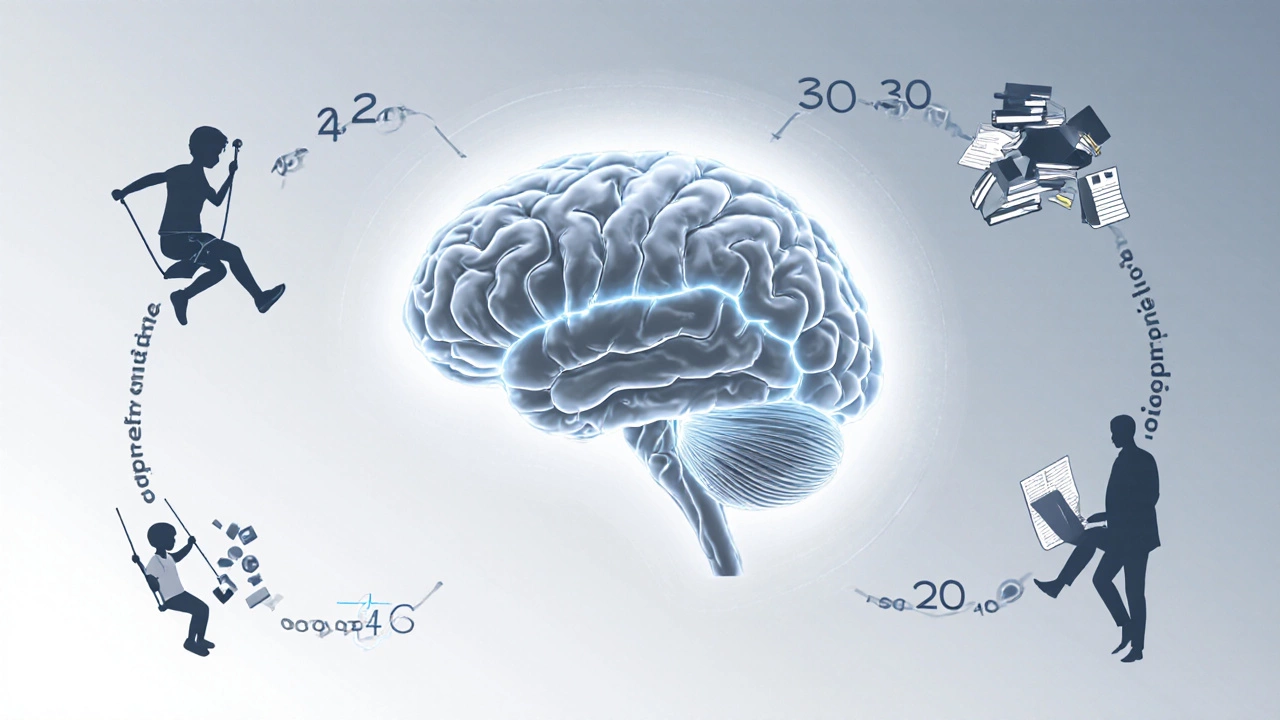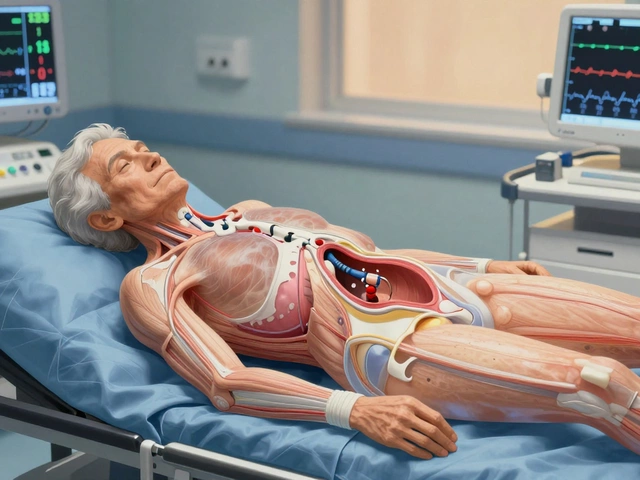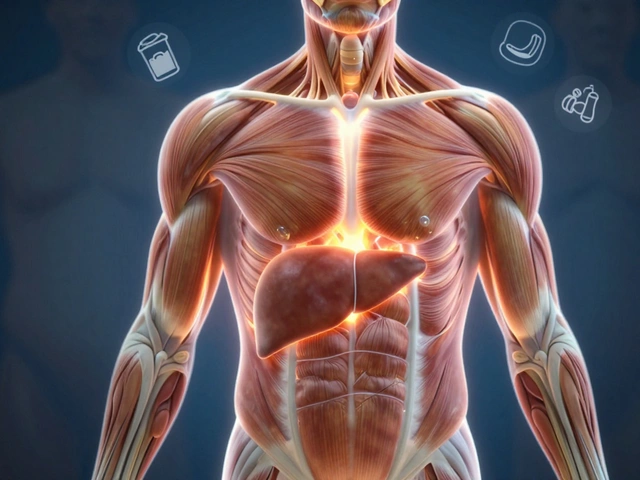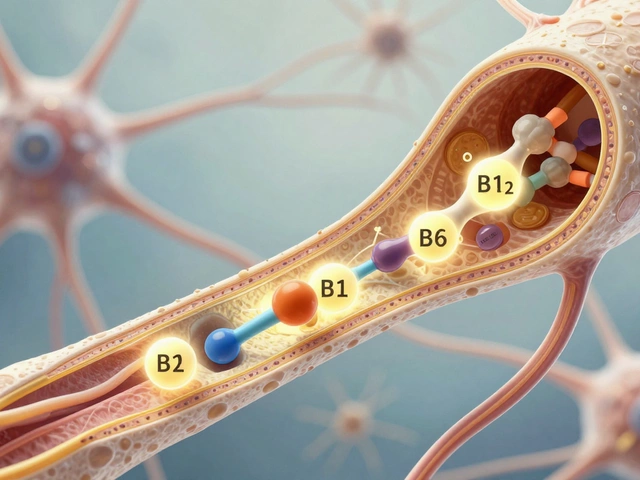ADHD Symptom Progression Calculator
Assess Your Symptom Trajectory
This tool helps you understand how your ADHD symptoms may evolve over time based on current symptom severity and treatment choices.
Rate each symptom from 1-5 (1 = mild, 5 = severe)
When people wonder if ADHD a neurodevelopmental condition marked by inattention, hyperactivity, and impulsivity gets worse as you grow older, the answer is more nuanced than a simple yes or no.
Understanding ADHD
First, let’s nail down what Attention‑Deficit/Hyperactivity Disorder actually is. It’s classified under the umbrella of Neurodevelopmental Disorders, meaning the brain develops differently from the start. Core symptoms fall into three buckets: inattention, hyperactivity, and impulsivity. While kids often show overt hyperactivity-like climbing on furniture or incessant fidgeting-adults may experience a quieter version, such as restlessness or a constant need to multitask.
How Symptoms Shift Over the Lifespan
Research spanning the last two decades shows a clear pattern: hyperactive behaviors tend to decline with age, but inattentive and executive‑function challenges often persist or even become more noticeable. A longitudinal study of 1,200 participants tracked from childhood into their 40s found that 60% of those diagnosed in childhood still met criteria for ADHD at age 30, mainly due to ongoing difficulties with planning, organization, and time management.
Why does this happen? The brain continues to mature well into the mid‑20s, especially the prefrontal cortex, which governs Executive Function. If that area is under‑wired early on, the deficit doesn’t magically disappear-it just manifests differently. Adults may no longer sprint around a classroom, but they might struggle to keep a project on track, miss deadlines, or forget appointments.
Factors That Influence the Trajectory
Several variables determine whether ADHD feels like it’s getting “worse”:
- Comorbidity: Co‑occurring conditions such as anxiety, depression, or substance‑use disorders can amplify ADHD‑related impairments.
- Genetics: A family history increases the chance of persistent symptoms.
- Environmental Factors like chronic stress, lack of sleep, or poor nutrition can worsen attention lapses.
- Brain Imaging studies reveal that reduced activity in the dorsolateral prefrontal cortex often correlates with higher symptom severity in adults.
- Treatment adherence: Stopping medication or behavioral therapy sharply raises the likelihood of symptom resurgence.

Debunking the “Worsening” Myth
One common misconception is that ADHD inevitably deteriorates. The reality is more balanced. While certain challenges can become more apparent, many adults report improved self‑awareness and coping strategies that offset the raw intensity of childhood symptoms. A 2023 survey of 5,000 adults with ADHD showed that 42% felt their condition had “stabilized” after age 30, citing structured routines and targeted therapy.
However, if you ignore the condition-skip follow‑up appointments, ditch medication, or neglect lifestyle changes-symptoms can appear to worsen. This isn’t the disorder itself getting stronger; it’s the lack of support letting existing deficits surface more dramatically.
Managing ADHD in Adulthood
Effective management blends medication, behavioral interventions, and lifestyle tweaks:
- Stimulant Medication (e.g., methylphenidate, amphetamines) remains the first‑line pharmacological treatment, improving focus in 70‑80% of adults.
- Non‑stimulant options like atomoxetine or guanfacine are useful for those who experience side effects or have comorbid anxiety.
- Cognitive Behavioral Therapy equips adults with concrete skills for time‑management, organization, and emotional regulation.
- Coaching and peer‑support groups provide accountability and shared strategies.
- Regular exercise, adequate sleep, and a balanced diet have measurable impacts on attention and mood.
Importantly, treatment plans should be revisited annually. What works in your 20s might need tweaking in your 40s, especially as life stressors change.

When to Seek Professional Help
If you notice any of the following, it’s time to talk to a mental‑health professional:
- Increasing difficulty meeting work or academic deadlines.
- Frequent forgetfulness that disrupts daily life.
- Escalating anxiety, depression, or irritability.
- Substance‑use behaviors that feel out of control.
- Relationship strain due to impulsive or inattentive actions.
Self‑assessment tools can give a rough gauge, but a qualified clinician will use standardized interviews and, if needed, rating scales to confirm an ADHD diagnosis.
Quick Reference: Children vs. Adults
| Domain | Typical Childhood Presentation | Typical Adult Presentation |
|---|---|---|
| Hyperactivity | Running, climbing, constant motion | Restlessness, inner agitation, difficulty sitting still |
| Impulsivity | Blurting answers, interrupting | Interrupting conversations, risky decisions, quick emotional reactions |
| Inattention | Easily distracted, unfinished tasks | Chronic disorganization, missed deadlines, frequent forgetfulness |
| Executive Function | Struggles with planning simple activities | Difficulty managing complex projects, budgeting, long‑term goal setting |
| Comorbidity | Learning disabilities, oppositional defiant disorder | Higher rates of anxiety, depression, substance‑use disorders |
Bottom Line
ADHD doesn’t follow a one‑size‑fits‑all trajectory. Hyperactivity often eases, but inattentive and executive‑function challenges can linger or feel more pronounced as life demands increase. The key is proactive management-regular check‑ins with a clinician, appropriate medication when needed, and proven behavioral strategies. With the right support, adults can thrive just as much as their younger counterparts.
Can ADHD symptoms disappear on their own as you age?
Symptoms rarely vanish completely without intervention. Some people experience a natural reduction in hyperactivity, but inattention and executive‑function deficits often persist. Ongoing treatment and coping strategies are usually necessary for lasting improvement.
Is it common for adults to be diagnosed with ADHD for the first time?
Yes. Many adults discover their childhood symptoms were actually ADHD after learning about the condition later in life. Approximately 30% of adult diagnoses are made after age 30, often when work or relationships bring challenges to the forefront.
Do stimulant medications work as well in adults as they do in children?
Research shows a similar response rate-about 70‑80% of adults report significant symptom relief. However, dosage adjustments and monitoring for side effects are crucial, as metabolic rates and comorbid conditions differ from childhood.
Can lifestyle changes alone control adult ADHD?
Lifestyle tweaks-regular exercise, consistent sleep, reduced screen time-can markedly improve focus, but they usually work best when combined with medication or therapy. Purely behavioral approaches rarely achieve full symptom control for most adults.
What are the warning signs that ADHD is getting worse?
Increasing missed deadlines, heightened irritability, frequent forgetfulness, and a rise in risky or impulsive behaviors can signal that symptoms are intensifying. If these patterns appear, it’s time to revisit treatment with a professional.









